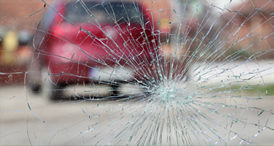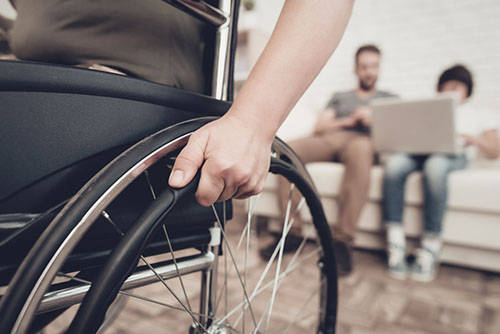When a train and a car get in a collision at a railroad crossing, it never ends well for the car. Trains on average weigh 3,200 tons, though depending on the freight being carried can be much heavier, and the average automobile weighs about two tons, though since this statistic includes large commercial vehicles as well, the average passenger car is often significantly lighter. It’s an undisputed fact that a train requires a significant distance to stop, usually over a mile from the point where the brakes are initially applied, and in addition they have no way to maneuver to avoid a collision. For this reason the first line of defense has been to equip the vast majority of urban track crossings with crossing gates, pavement markers, and systems of warning lights and bells. Despite the combination of safety devices and public knowledge, most collisions between a train and a car are reported as having been caused by the driver of the vehicle attempting to drive around the safety barricades and cross in front of the train to save the time it would take to wait for it to pass.
New Reports of Industry Misconduct
It is a common belief among the public that railroad crossing collisions must have been caused by the driver of the car making a bad decision; however recently numerous cases of railroad companies tampering with evidence about these collisions have been discovered. These reports have spanned several different major railroad transportation companies, and involve behaviors that are not only underhanded but completely illegal: the destruction or concealing of evidence that safety devices used at railroad crossings were negligently maintained, and that in some cases necessary repairs were deliberately ignored.
The reason for this is strictly financial. Due to the large distances and long times required for a train to come to a stop in even an emergency situation, railroad safety procedures are necessarily held to a very high standard of care: since the safety devices installed at railroad crossings are essentially the only thing that the railroad industry can do to prevent collisions with cars at these crossings their upkeep must be given the highest priority. Anything less is likely negligent. Because of this, a pattern of poor maintenance or other negligent behavior on the part of an individual railroad company or the industry as a whole would make it extremely difficult for railroad industry attorneys defending the companies in court in matters involving railroad crossing collisions to convincingly argue that an accident at a railroad crossing was more likely than not the fault of the driver of the car involved. A precedent like this could very quickly become financially disastrous to an industry that currently has the benefit of the doubt in these matters.
Shaky Statistics
According to Federal studies, 87 percent of collisions at railroad crossings are caused by “risky driver behavior or poor judgment.” What the studies do not immediately clarify is that their raw data largely comes from internal accident reports kept by the railroad companies themselves. These studies have led to a concentration on driver education programs such as the “Always Expect A Train!” media campaign. And while this campaign has been touted to have been responsible for about a 50 percent drop in deaths at railroad crossings since 1990, over the same time period tens of thousands of railroad track crossings have also been taken out of service, making the development of balanced statistics highly problematic.
Contact an Attorney
A collision at a railroad crossing can be caused by many factors that are not the fault of the driver of the automobile: obscured right of ways, broken warning equipment, or human error by the railroad engineer. If you have lost a loved one in a railroad crossing collision you may not have even considered that circumstances outside of their control may have been to blame. We encourage you to contact the skilled Indianapolis auto accident attorneys of Rowe & Hamilton, Attorneys at Law, today to discuss your potential case.





